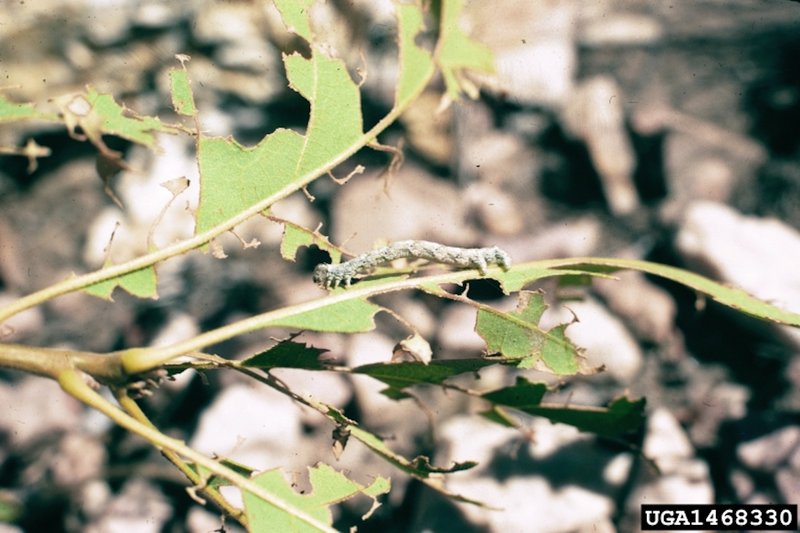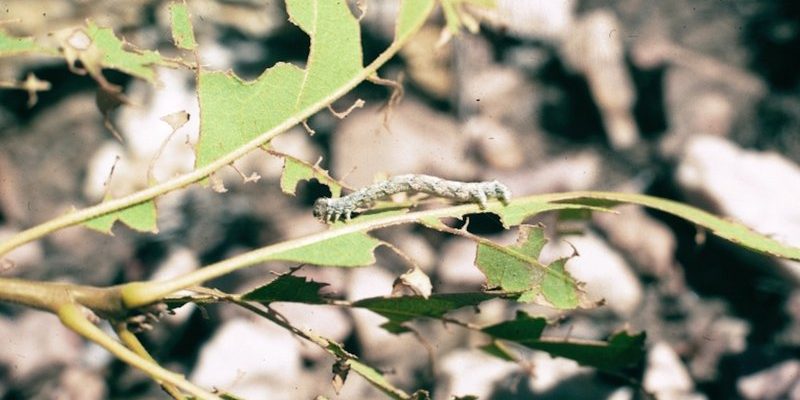
When it comes to inchworm management, many folks immediately think about pesticides. However, the truth is that there are plenty of effective and eco-friendly alternatives. Think of it like choosing between fast food and home-cooked meals; you can get the job done either way, but one option is definitely better for your health. In this guide, we’ll explore various methods to keep inchworms at bay, ensuring your garden remains vibrant and healthy, all while steering clear of harmful chemicals.
Understanding Inchworms: What Are They?
Before we jump into management techniques, it’s helpful to know what we’re dealing with. Inchworms aren’t actually worms; they’re the larvae of moths, and they get their name from their unique way of crawling. As they inch their way along branches and leaves, they resemble a measuring tool. These little guys can quickly defoliate trees and shrubs if left unchecked, which is where your management strategies come into play.
Inchworms come in various species, and some might be more problematic than others. They thrive in lush, leafy environments and tend to become especially active in springtime. Picture them as tiny green ninjas, stealthily working to munch through your garden. Knowing about their life cycle can help you understand the best time to intervene. Typically, they emerge from eggs laid by adult moths around late spring, so that’s when you’ll want to be most vigilant.
Recognizing inchworms is the first step in managing them effectively. Most are slender and can blend in with leaves, making them hard to spot. They’re often green or brown, which adds to their stealthy charm. Keeping an eye on your plants and learning how to identify these pests will make it easier to decide when action is necessary.
Natural Predators: Mother Nature’s Helpers
One of the best ways to manage inchworms is by employing their natural enemies. Mother Nature has a great way of balancing ecosystems, and introducing or encouraging *natural predators* can help keep inchworm populations under control. Birds, for example, love to snack on inchworms. So, if you want to attract these feathered friends, try putting up bird feeders or birdhouses in your yard.
Another natural predator to consider is the *trichogramma wasp*. These tiny wasps lay their eggs inside inchworm eggs, effectively reducing their numbers before they even hatch. If this sounds like an interesting approach, you can often purchase these beneficial insects at garden stores or online. It’s like inviting a secret weapon into your garden—that does all the hard work for you!
By creating a welcoming habitat for these natural foes, you not only manage inchworms but also support a healthier garden ecosystem. You can plant diverse plants and flowers that attract beneficial insects, providing food and shelter for them to thrive. Think of it as setting up a protective community around your plants.
Physical and Mechanical Controls: Getting Hands-On
Sometimes the best way to tackle inchworms is through good old-fashioned physical control. Valid methods include handpicking and using barriers. If you see inchworms on your plants, don’t hesitate to pick them off by hand and drop them into a bucket of soapy water. It might feel a bit gross, but you’ll be doing your plants a favor!
Another effective method is using **physical barriers** like row covers or fine mesh netting. These tools can keep inchworms away from your plants, acting as a protective shield. Just make sure to secure them properly to prevent the little munchers from sneaking underneath. This strategy works really well if you place the covers over plants before the moths start laying eggs.
Using traps can also make a big difference. Sticky traps, for instance, can catch inchworms as they attempt to crawl onto your plants. Place them near susceptible plants, and this simple step can significantly reduce their population. Happy trapping!
Organic Solutions: Natural Sprays and Remedies
If you’re not keen on handpicking inchworms or setting up barriers, there are several organic sprays you can use. These sprays can deter inchworms while being safe for your plants and the environment. One popular option is **Neem oil**, which comes from the seeds of the neem tree. It disrupts the insect’s ability to feed and breed without harming beneficial insects.
Another effective remedy is a homemade soap spray. Mixing a few drops of liquid soap with water can create a solution that suffocates inchworms upon contact. Just be sure to test it on a small area of your plant first to avoid any adverse reactions.
You might also consider plant-based insecticidal sprays that target common pests. Look for sprays that contain ingredients like **pyrethrin**, derived from chrysanthemum flowers. These sprays can knock out inchworms while remaining gentle on your garden. Always follow the directions carefully for the best results.
Cultural Practices: Preventing Future Infestations
Prevention is often the best strategy when it comes to inchworms. By making smart choices in your garden practices, you can reduce the likelihood of an infestation occurring in the first place. This starts with healthy soil and plants. Ensure your garden has proper drainage and good fertility to keep plants robust, as stronger plants can withstand pests better.
Regularly cleaning up fallen leaves and debris can also help. Inchworms often hide out in leaf litter; by removing this habitat, you make your garden less appealing to them. Think of it as tidying up a room—removing clutter makes it less inviting for unwanted guests.
Crop rotation is another cultural practice that can help manage pests. Changing where you plant certain crops each year can disrupt the life cycle of inchworms. They prefer to return to familiar feeding grounds, and moving your plants can throw them off their game. This simple shift can create a more resilient gardening environment.
Monitoring and Early Intervention: Stay Vigilant
Keeping a close eye on your garden is essential for inchworm management. Regular monitoring can help you catch infestations early before they get out of hand. This is especially crucial during the growing season when inchworms are most active.
Set aside some time each week to check your plants. Look under leaves and along stems—the earlier you spot inchworms, the easier they are to control. It can feel rewarding to see your efforts paying off as you keep these little pests at bay.
If you do notice an increase in inchworms, don’t panic! Use the strategies we’ve talked about—like introducing predators, handpicking, or using organic sprays. Remember, the key is to remain proactive and stay informed about the health of your plants.
In closing, managing inchworms without pesticides is not only possible; it can also be very effective! By understanding these pests, using natural predators, employing physical controls, and implementing organic solutions, you’re on the right path. Remember, your garden is a living ecosystem, and taking a holistic approach will lead to healthier, more vibrant plants. So, when those inchworms come knocking, you’ll be more than ready to send them packing!

